Getting to a summit that is 3000 meters high is never easy, but there are factors that make some peaks in the Dolomites easier than others. Piz Boè is one of them.
According to Unesco, there are 18 peaks in the Dolomites that are above 3000 meters of elevation. But this probably depends on how a peak is defined related to its prominence. In my separate post you have an interactive map with 24 of them.
In any case, I would say that Piz Boè is the easiest of all, and my reasons for saying this are the following:
- High car access.
- The normal route is a non-technical walk up.
- Easy orientation.
- Presence of lift.
- There are several huts around.

High car access
Piz Boè 3152 m (10341 ft) is highest peak of the huge Sella Group (Gruppo del Sella). This area is surrounded by several high passes with good roads and car access.
The most convenient climbing route and the highest car access point is from the Pordoi Pass 2239 m (7346 ft) shown in the picture below. So this gives 913 meters (2995 ft) of elevation difference to climb. This is still a lot but completely doable as a day tour for anybody in normal physical conditions.
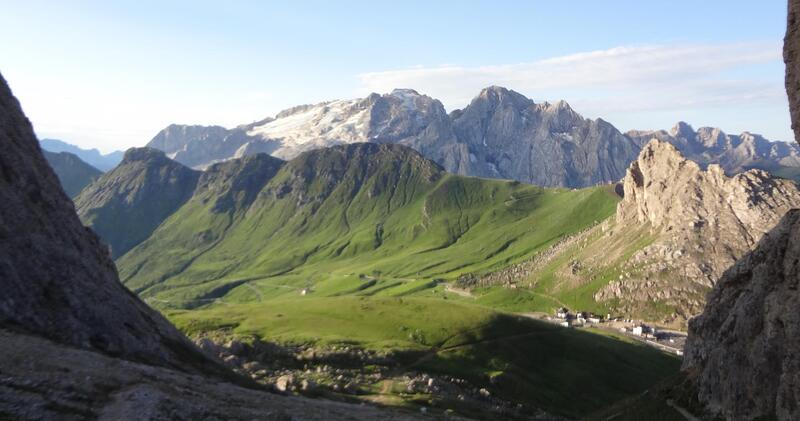
Observe that this is about high elevation and there is no doubt you will feel it. The oxygen level at such altitudes is several percent lower compared to the valleys around.
More precisely, at 3000 meters it is around 14%, as compared to around 21% at the sea level. At the pass where you start it is 16%. You can see how the oxygen percentage in the air changes with elevation in this file.
So listen to your body, and if you feel effects of altitude, do not continue. Trust me on this. I have been over 4000 meters without elevation sickness, yet I have experienced it numerous times at 2000 meters.
There is no rule for it, you can never know. The only way is to get acclimatized, but this takes time, and tourists in the Italian Alps do not have it enough.
Non-technical normal route
I climbed Piz Boe from the mentioned Pordoi Pass, and I can confirm here from my own first-hand experience that the route is of the walk-up type. There are no exposed sections anywhere.
Below the summit there are several passages with fixed cables, see the picture, but they are there just for some extra protection, and you do not need any ferrata equipment.
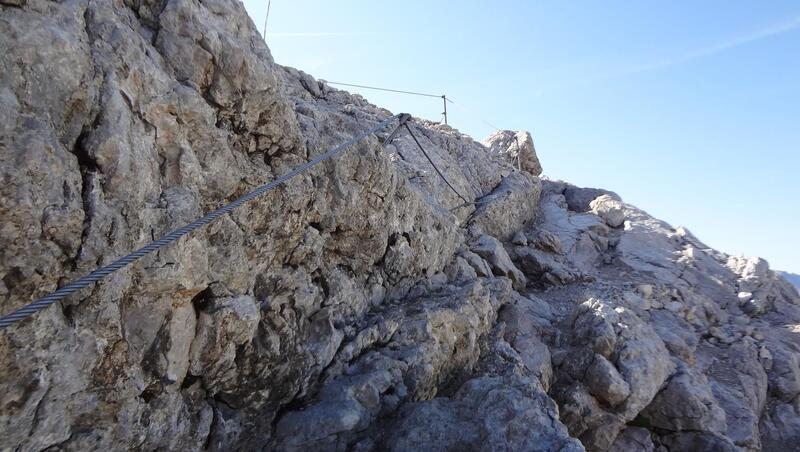
So all you need for this mountain is a pair of comfortable hiking boots and desire and stamina to walk. More details you can see in my text about the climb.
Easy orientation
When you start from the Pass, you will have signs showing the direction, see the picture below. Your direction will be the passage in the rocks that you see on the top, it is on the right above the direction table.

So just follow the route to the Forcella Pordoi hut (2848 m, 9344 ft). It is almost impossible to miss it. Here is how it looks when you get up through the mentioned narrow passage through the rock wall before you get to the large plateau above:
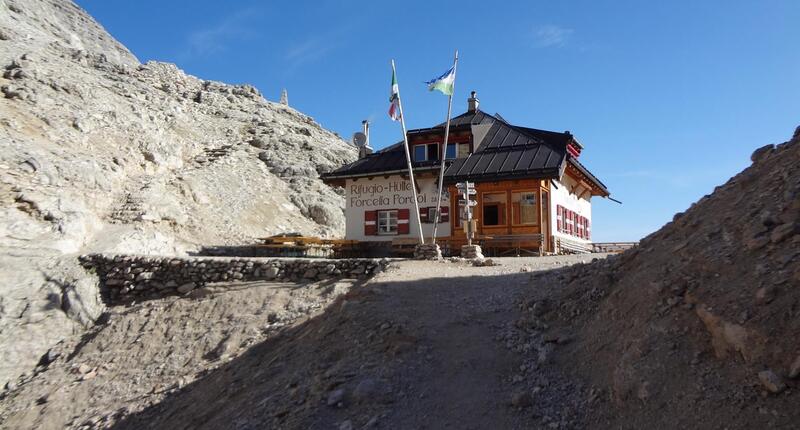
Here you cam have a well-deserved stop and you can also have your meal. After that you will continue to the right from this hut, and soon after that you will have the summit in sight, this is how it looked when I was there:
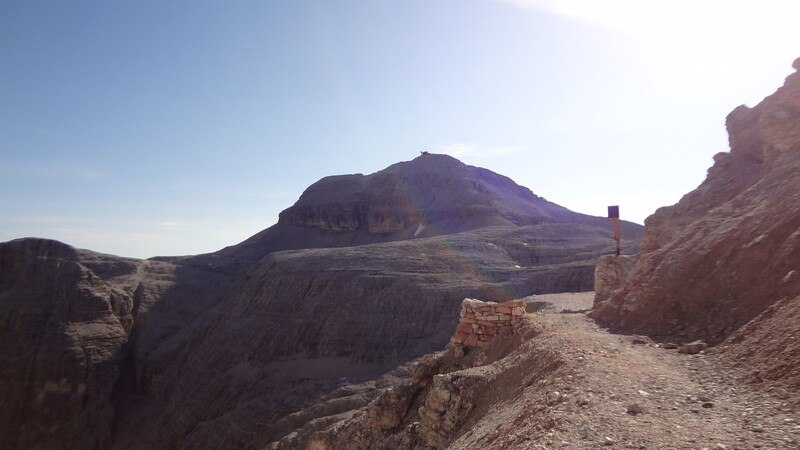
The path is marked and the direction is obvious, there is nothing to guess. There is a pleasant and more or less flat section in front of you.
Note that there is yet another hut exactly on the summit, the Capana Piz Fassa, when you get there, you will see this:

Lift access
If you have no time, or if you are with small kids who cannot walk the mentioned elevation difference, no worry. You can take the lift from the Pordoi Pass that will take you to the summit of Sass Pordoi (2950 m, 9678 ft).
The lift station is shown in the picture, and you can even see the mentioned Forcella Pordoi hut, it is a few hundred meters below it:
So from the lift station you descend in the direction of the mentioned Forcella Pordoi hut, the path is easy to follow, and then continue to the summit.
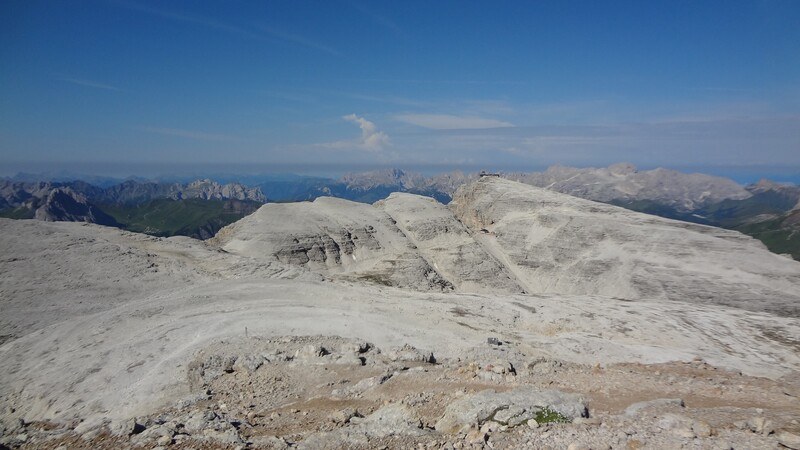
Three huts around
I already mentioned two huts, but there is one more, this is the Rifugio Boè, it is off the route to the summit, so you do not have to go there. But you can make an easy round tour. See how it looks:
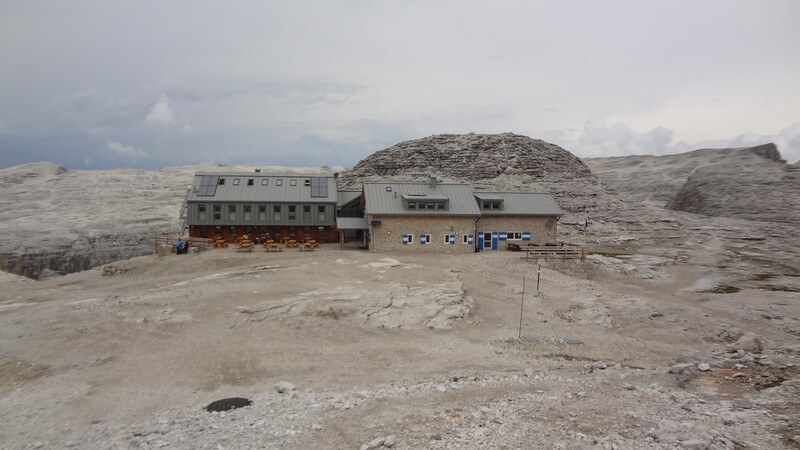
This means you can descend from the summit of Piz Boe towards Rifugio Boè, and then walk back towards Forcella Pordoi hut. From there you can walk up to the lift station that will take you back to the car parking, or walk down to the pass.
In all three huts you can have meals and drinks, and this holds also for the lift station, so no need to carry anything. You can also stay the night in any of the three huts.
All in all, the route from the car parking to the summit of Piz Boe will take around 3 hours and 30 minutes. If you use the lift, then you will be on the summit probably in one hour or so. I have not used it so cannot be exact here.
Thank you for reading. Please use the comment box below in the case of questions or comments.
This site is all about mountains and equipment, so bookmark it and keep as a reference. Please join us at our Facebook group Dolomites Visitors Hub. Thank you for reading and have a nice day.
Leave a Reply